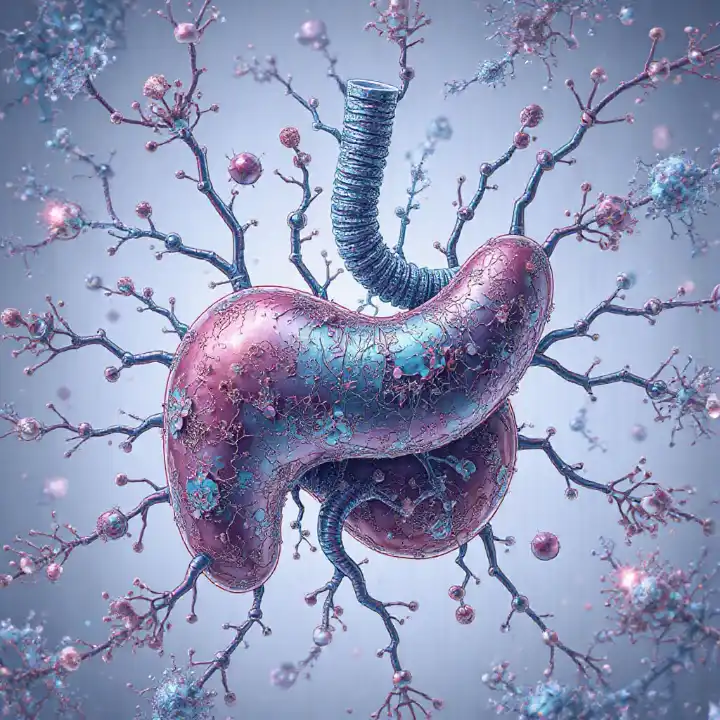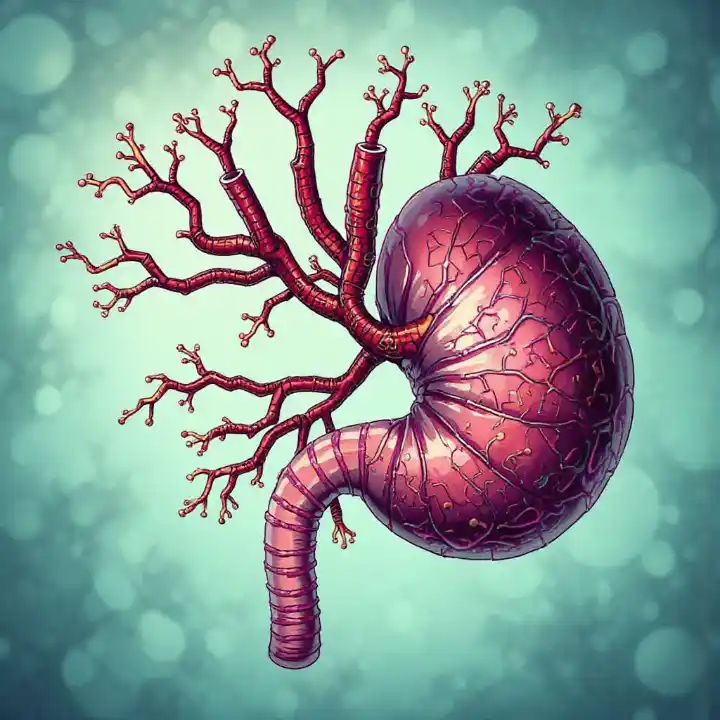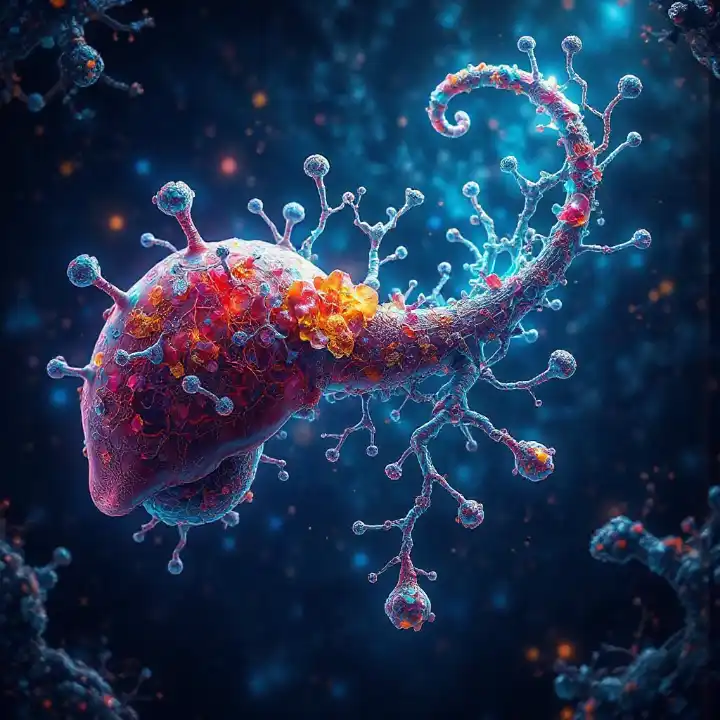What Are the Symptoms of Pancreatic Cancer

Pancreatic cancer often develops silently, making early detection challenging. You might not notice symptoms until the disease progresses. 📖 Explore Our Full Cancer Types Directory. Only 14% of cases are diagnosed at a localized stage, where treatment is most effective. The table below highlights how pancreatic cancer is typically detected:
Stage | Percentage |
|---|---|
Localized | 14% |
Regional | 29% |
Distant | 51% |
Unknown | 6% |
Recognizing subtle changes in your body can make a significant difference. If you experience unusual symptoms, paying attention and seeking medical advice promptly could save your life.
Key Takeaways
Yellow skin or eyes might mean pancreatic cancer. Watch for this.
Losing weight without trying could be a problem. See a doctor.
Getting diabetes after age 50 might be a warning. Check your sugar levels.
Ongoing belly or back pain needs attention. Tell a doctor if it gets worse.
Finding it early is important. Notice small body changes and act fast.
Common Symptoms of Pancreatic Cancer

Jaundice
Causes of jaundice in pancreatic cancer
Jaundice often occurs when pancreatic cancer blocks the bile duct. This blockage prevents bile, a substance that helps digest fats, from flowing into the intestines. Instead, bile builds up in your bloodstream, leading to a yellowish tint in your skin and eyes. While jaundice can result from other conditions like gallstones or hepatitis, it is a common symptom in pancreatic cancer, especially when the tumor is located near the head of the pancreas.
How jaundice appears in daily life
You might notice yellowing of your skin or the whites of your eyes. Dark urine and pale, greasy stools are also common signs. Some people experience itchy skin, which can feel persistent and uncomfortable. These changes may seem minor at first but should not be ignored, as they could indicate a serious underlying issue.
Abdominal and Back Pain
Why pancreatic cancer causes pain
Pain in the abdomen or back often develops as the tumor grows and presses against nearby organs or nerves. This symptom is more common in advanced stages of pancreatic cancer. The pressure caused by the tumor can also lead to inflammation, further contributing to discomfort.
Characteristics of the pain
The pain usually starts in the upper abdomen and may radiate to your back. It often worsens after eating or when lying down. About 75% of people with advanced pancreatic cancer report experiencing this type of pain. If you notice persistent or worsening discomfort in these areas, it’s important to consult a healthcare provider.
Unexplained Weight Loss
How pancreatic cancer leads to weight loss
Unintended weight loss is a frequent symptom of pancreatic cancer. The disease can interfere with your body’s ability to digest food and absorb nutrients, leading to rapid weight loss. Many patients report losing significant amounts of weight, sometimes as much as 50 to 60 pounds, before receiving a diagnosis.
Associated symptoms like appetite loss
You might also experience a loss of appetite, nausea, or a feeling of fullness after eating small amounts. These symptoms can make it difficult to maintain a healthy weight and may signal an issue with your pancreas. Paying attention to these changes can help you seek medical advice sooner.
Digestive Problems
Symptoms like nausea, bloating, and diarrhea
Pancreatic cancer often disrupts your digestive system. The pancreas produces enzymes that help break down food. When cancer interferes with this process, you may experience malabsorption. This condition prevents your body from properly absorbing nutrients, leading to symptoms such as bloating, gas, and diarrhea. The diarrhea may appear watery, greasy, or have a foul smell. These issues can also contribute to weight loss and vitamin deficiencies, making it harder for your body to function optimally.
You might notice nausea or a feeling of fullness even after eating small meals. These symptoms can make eating uncomfortable and reduce your appetite. If you experience persistent digestive problems, it’s important to consult a healthcare provider.
Impact of pancreatic cancer on digestion
Pancreatic cancer affects digestion by blocking the production of enzymes your body needs to process food. Without these enzymes, your body struggles to break down fats, proteins, and carbohydrates. This can lead to ongoing discomfort and nutritional deficiencies. Over time, these digestive issues may weaken your immune system and overall health. Paying attention to these changes can help you identify potential problems early.
New-Onset Diabetes
Link between pancreatic cancer and diabetes
New-onset diabetes can be an early warning sign of pancreatic cancer. Research shows that nearly two-thirds of people diagnosed with pancreatic cancer also have diabetes or prediabetes. If you develop diabetes after age 50, your risk of pancreatic cancer increases significantly. This connection highlights the importance of monitoring blood sugar levels, especially in older adults.
Early signs of diabetes to monitor
You should watch for sudden symptoms of diabetes, as they may indicate an underlying issue with your pancreas. Common signs include:
Increased thirst and frequent urination
Fatigue and blurred vision
Unexplained weight loss
Diabetes usually develops gradually, so a sudden onset of these symptoms should prompt you to seek medical advice. The pancreas plays a key role in insulin production, and a tumor can disrupt this process. Early detection of diabetes could lead to a quicker diagnosis of pancreatic cancer, improving your treatment options.
Less Common Symptoms of Pancreatic Cancer
Fatigue and Weakness
Why fatigue occurs in pancreatic cancer
Fatigue is a common issue for people with pancreatic cancer. The disease often causes your body to use more energy than usual to fight the tumor. This can leave you feeling drained. Additionally, poor digestion and nutrient absorption can lead to low energy levels. If the cancer spreads, it may also cause anemia, which contributes to feelings of weakness.
How it affects daily life
You might notice that everyday tasks feel more exhausting than usual. Activities like climbing stairs or carrying groceries could become challenging. Persistent fatigue can also affect your mood and concentration, making it harder to focus on work or enjoy hobbies. If you experience ongoing weakness, it’s important to discuss this with your doctor.
Changes in Stool and Urine
Pale, greasy stools and dark urine
Pancreatic cancer can cause noticeable changes in your stool and urine. Jaundice, a common symptom, often leads to pale, clay-colored, or greasy stools. This happens because bile, which gives stool its brown color, cannot reach your intestines. You might also notice foul-smelling stools due to the pancreas's inability to produce digestive enzymes. Dark urine is another sign, caused by excess bilirubin in your bloodstream.
What these changes indicate
These changes often point to a blockage in the bile duct or issues with enzyme production. They can signal that your pancreas is not functioning properly. If you observe these symptoms, you should consult a healthcare provider promptly.
Note:
The table below highlights some uncommon symptoms of pancreatic cancer:
Symptom
Frequency
Hair thinning
Uncommon
Hair loss
Uncommon
Blood Clots
Increased clotting risk in pancreatic cancer
Blood clots can sometimes be an early sign of pancreatic cancer. The disease stimulates your blood clotting mechanisms, increasing the risk of clots. Deep vein thrombosis (DVT) is a common type of clot that may occur. This condition can cause swelling and pain, usually in the legs.
Recognizing symptoms of blood clots
You should watch for swelling, redness, or pain in your leg. These symptoms might indicate a clot. In severe cases, a clot can travel to your lungs, causing a pulmonary embolism. This is a medical emergency and requires immediate attention.
When to Seek Medical Advice
Persistent or Worsening Symptoms
Monitoring symptoms over time
Paying attention to your body is essential. Symptoms like jaundice, abdominal pain, or unexplained weight loss may seem minor at first. However, if these issues persist or worsen over time, they could indicate a serious condition like pancreatic cancer. Keep track of any changes, such as the sudden onset of fatigue, digestive problems, or new-onset diabetes. Monitoring these symptoms can help you identify patterns that warrant medical attention.
Tip: Keep a symptom diary to note when symptoms appear, how long they last, and their severity. This information can help your doctor make a more accurate diagnosis.
Importance of acting on subtle changes
Subtle changes, like itchy skin or dark urine, might not seem alarming. Yet, these could signal underlying issues with your pancreas. Acting quickly on these signs can lead to earlier detection and better treatment outcomes. If you notice persistent nausea, vomiting, or changes in stool color, consult a healthcare provider. Early action can make a significant difference in managing your health.
Risk Factors and Family History
When family history warrants early screening
Your family history plays a crucial role in assessing your risk for pancreatic cancer. About 10% of cases are hereditary. If a first-degree relative has had pancreatic cancer, your risk increases. Genetic testing may help identify inherited mutations linked to the disease. Even if the specific gene is unknown, a strong family history should prompt early screening.
Note: If multiple family members have had pancreatic cancer or related cancers, discuss genetic counseling with your doctor.
Other risk factors like smoking and chronic pancreatitis
Certain lifestyle and health factors also raise your risk. Smoking significantly increases the likelihood of developing pancreatic cancer. Chronic pancreatitis, especially when linked to heavy alcohol use, is another major risk factor. Additionally, conditions like type 2 diabetes and obesity contribute to higher risk levels. Men and African Americans face a greater incidence of pancreatic cancer due to factors like smoking and diabetes prevalence. Understanding these risks can help you take preventive measures, such as quitting smoking or managing chronic conditions effectively.
Importance of Early Detection in Pancreatic Cancer

Challenges in Early Diagnosis
Why symptoms often appear late
Detecting pancreatic cancer early is difficult due to several factors. The pancreas is located deep within your abdomen, making it hard for doctors to feel or see tumors during routine physical exams. Symptoms often develop gradually and may not seem serious at first. For example, you might notice mild digestive issues or fatigue, which are easy to overlook. Additionally, current diagnostic tools struggle to identify small tumors or pre-cancerous changes. These challenges highlight why many cases are diagnosed at advanced stages.
How early detection improves outcomes
Identifying pancreatic cancer early can significantly improve your chances of survival. Early diagnosis allows access to more treatment options, including surgery, which can increase survival rates by up to ten times. Patients diagnosed in the early stages often experience better outcomes and longer life expectancy. For instance, detecting the disease 4-6 years earlier than usual can lead to a noticeable reduction in mortality rates.
Finding | Description |
|---|---|
Early Detection Benefits | Increased life-years gained when detection occurs 4-6 years prior to diagnosis. |
Mortality Reduction | Earlier detection leads to reduced mortality compared to no screening. |
Sojourn Time Impact | Benefits diminish when detection occurs too early for aggressive cancers. |
Role of Regular Screenings
Screening options for high-risk individuals
If you are at high risk for pancreatic cancer, regular screenings can help detect the disease earlier. Surveillance programs often include imaging techniques like MRI scans and endoscopic ultrasounds. These methods provide detailed images of your pancreas and surrounding tissues, making it easier to spot abnormalities. Blood-based tests are also being developed to improve early detection. By participating in these programs, you can monitor your health more effectively and catch potential issues sooner.
Discussing symptoms with a healthcare provider
Talking to your doctor about unusual symptoms or risk factors is essential. Regular screenings have shown promising results in improving survival rates. For example, individuals in surveillance programs had a 5-year survival rate of 50%, compared to just 9% in the general population. Nearly 38.5% of participants were diagnosed at stage I, a significant improvement over the general population's 10.3%. Educating yourself about risk factors, such as smoking or family history, can also encourage proactive screening and better health outcomes.
Recognizing the symptoms of pancreatic cancer early can make a significant difference in your health outcomes. Pay attention to signs like jaundice, persistent nausea, new-onset diabetes, or unexplained fatigue. These symptoms, though subtle, may indicate serious underlying issues. Early detection improves treatment options and survival rates. If you notice unusual changes in your body, consult a healthcare provider without delay. Taking action promptly could save your life.
Key Takeaways:
Jaundice: Yellowing of the skin and eyes.
Nausea and Vomiting: Persistent discomfort.
New-Onset Diabetes: Sudden blood sugar changes.
Fatigue: Extreme tiredness.
Blood Clots: Risk of serious complications.
FAQ
What are the early warning signs of pancreatic cancer?
Early signs include jaundice, unexplained weight loss, and new-onset diabetes. You might also notice persistent abdominal pain or changes in stool color. These symptoms often appear subtle but should prompt you to consult a healthcare provider.
Can pancreatic cancer be detected through blood tests?
Routine blood tests usually don’t detect pancreatic cancer. However, specialized tests like CA 19-9 or CEA markers may help monitor the disease. These tests are often used alongside imaging techniques for diagnosis.
Is pancreatic cancer hereditary?
Yes, about 10% of cases are hereditary. If you have a family history of pancreatic or related cancers, consider genetic testing. Early screening can help detect potential risks and improve outcomes.
How does smoking increase the risk of pancreatic cancer?
Smoking damages pancreatic cells and increases inflammation, raising your cancer risk. Smokers are twice as likely to develop pancreatic cancer compared to non-smokers. Quitting smoking significantly reduces this risk over time.
Are there any lifestyle changes to lower the risk of pancreatic cancer?
Yes, maintaining a healthy weight, eating a balanced diet, and avoiding smoking can reduce your risk. Regular exercise and limiting alcohol intake also play a role in prevention. Discussing risk factors with your doctor can provide personalized advice.
Tip: Small lifestyle changes today can make a big difference in reducing your cancer risk tomorrow.
ℹ️ Explore more: Read our Comprehensive Guide to All Known Cancer Types for symptoms, causes, and treatments.
#BanishCancer
See Also
Identifying Key Signs of Kidney Cancer You Should Know
Recognizing the Warning Signs of Appendix Cancer Early
Understanding the Symptoms Associated with Male Breast Cancer
